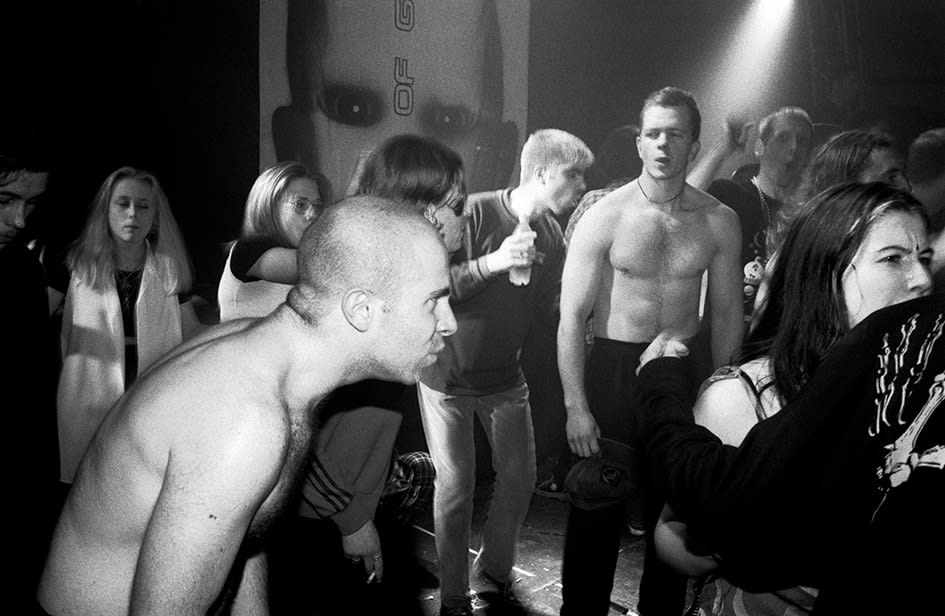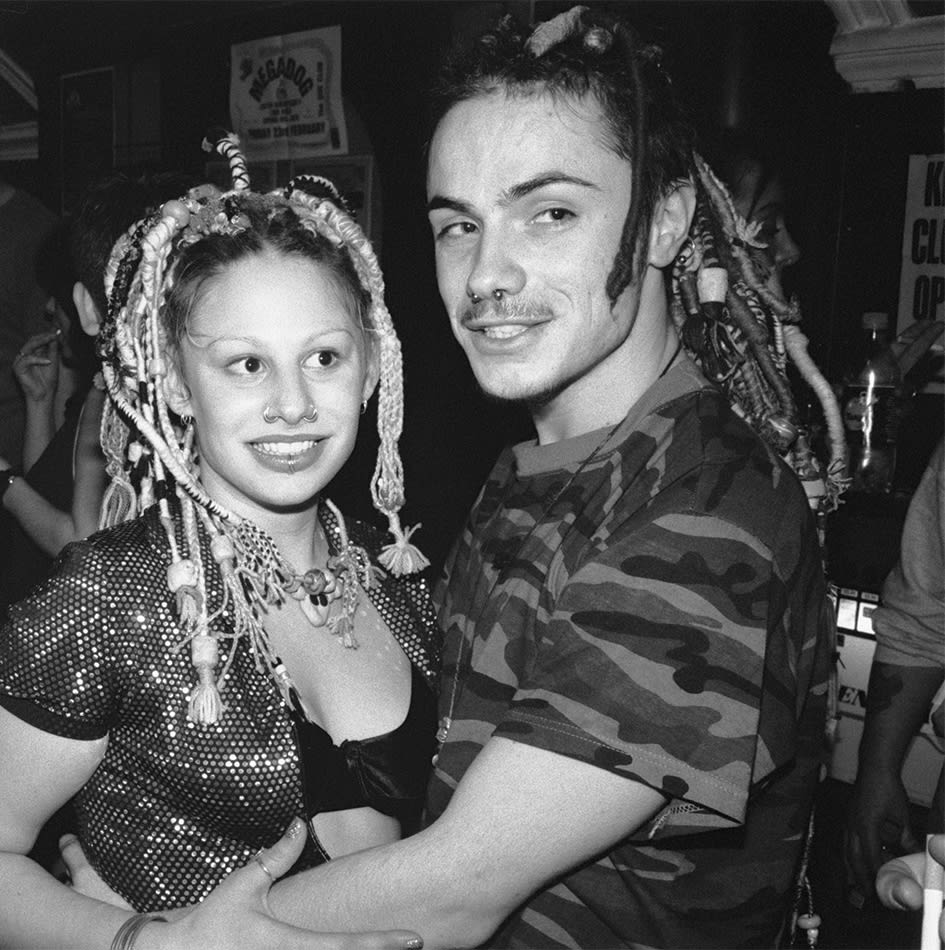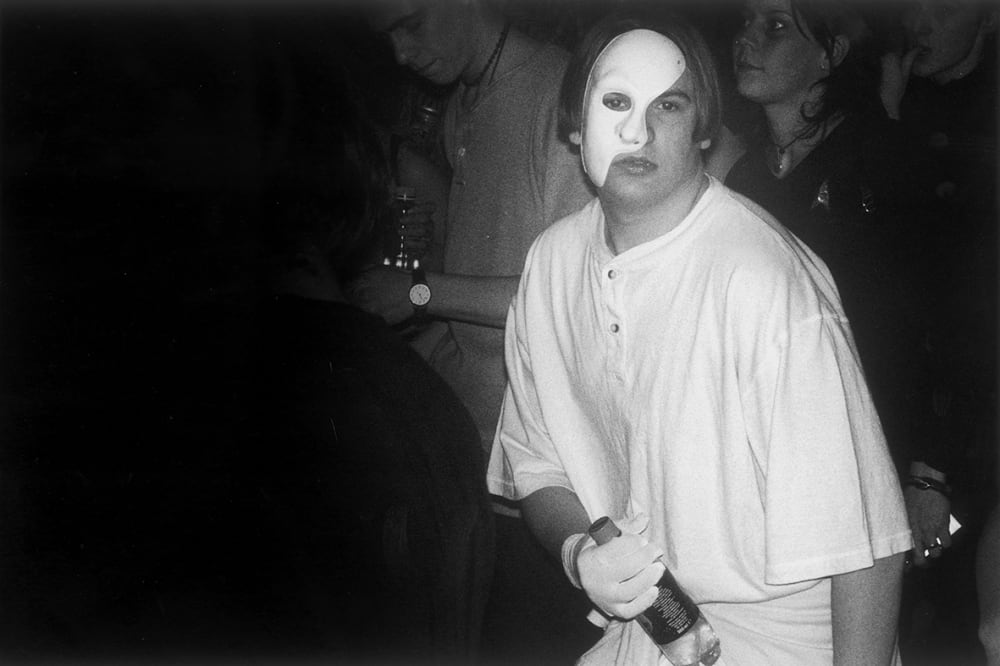An exhibition of Terence Donovan's images from the techno scene at Birmingham's Que Club.
Born in the in East End of London in 1936, Terence Donovan grew to be one of Britain’s most revolutionary magazine photographers. A highly esteemed fashion photographer, his work was seen in the likes of Harper’s Bazaar and British Vogue.
Yet his work reached far beyond the pages of glossy fashion magazines, and he was often inspired by the streets in which he was raised, both within his fashion photography and observational images. Terence Donovan had a keen eye, capturing everyday moments in a fascinating light.
This exhibition explores some of Terence Donovan’s previously unseen observation imagery.

In January 1996, Terence was invited by his son to join him in Birmingham at the renowned techno club night House of God, housed within the infamous Que Club. The images captured during this night present a raw, unedited and organic representation of the techno scene in the mid-90s. Encapsulating the spirit of House of God, the images feature an often overlooked city in the history of British techno music.
The Birmingham music scene is one unlike any other - a city swelling with multiculturalism, the music scene as diverse as its population. Considered the UK’s second city, Birmingham has produced a number of musicians and artists who have changed the landscape of British music - from Black Sabbath’s leading man Ozzy Osborne, to reggae/pop act UB40 to The Streets’ mercury prize winning first album.
The city’s cultural outputs are vast, and yet Birmingham is the UK’s underrated city of musical culture. In the height of the British techno revolution, club goers flocked to the Haçienda in Manchester, or London for the capital’s vast collection of clubs offering up new music.

Today, as many of these nightclubs and event spaces across the UK continue to close at an alarming rate, House of God remains. One of Birmingham’s longest standing techno club nights, it is now in its 27th year. The night has shifted between venues around the city, from purpose-built clubs to reused spaces like Que Club’s abandoned church.
House of God has managed to adapt and keep the techno scene alive in Birmingham. Creating a community of music lovers and party goers, House of God has transformed into much more than just a club night.
The images presented here show House of God in its infancy. But, 24 years later, the images remain as potent as ever in revealing the true nature of the celebrated night.
In the Que
The pictures you see here were taken at the Que Club; a Methodist Central Hall turned into a techno haven. Part of Birmingham’s history, the Que Club has hosted club nights like Atomic Jam, Flashback and House of God. It was also the stage on which David Bowie performed. Its maze-like floorplan allowed for different kinds of environments within the same party, where you could experience a multitude of sounds.

Walk out of the main cathedral and you could discover a room playing Italian sounds, while in others you could enjoy reggae, or different kinds of drum ‘n bass. It was within this labyrinth that you could picture the myriad of characters and styles present in the club and meet all kinds of people. This strange and picturesque scenario helped give regulars at Que Club an incredible sense of community, where people felt like they belonged.
As House of God-goer Sandra described: “It’s this wonderful place, where you just go up the huge, big like stairs and you've just got corridors everywhere and like massive rooms. And sometimes there'd be different rooms open. So, you've just got this maze of just people everywhere. Music, different music in different rooms. Different people that you can meet and chat too. I don't know, it was just... it was a wonderful time. It was really quite, yeah, very special. I think it ruined other clubs for me, basically.”
Most of the pictures you see here were taken by Terence Donovan in the main room of the Que Club.
Fashion imagery
There are many characteristics of fashion in the 1990s, such as the Japanese fashion culture, the retro revival of the culture, and the golden age of the super models . These few examples highlight the diversity of fashion in the ‘90s and the subcultural influences have, in recent decades, offered many people willing to express their cultural preferences visual cues to explore their identities.

This project records a very specific manifestation of subcultural fashion in the UK in the 1990s. An exaggerated hairstyle, tattoos and club culture become a part of many young people's lives which was very colourful. At the time you can notice in this project a range of different styles and different young people.
Yet a consistent theme emerges: they are enjoying the party, which coincides with the characteristics of fashion in the ‘90s, diversity and inclusion, everyone presenting their individual fashion statement. Under the spotlight, maybe everyone could become a big star. In modern society, the boundary between the subculture and universal culture is gradually blurred, and subculture and fashion are increasingly integrated.

What might have seemed extraordinary and surprising at the time these images were taken by Terence Donovan, could be called retro or commonplace in today's fashion context. When we contextualise the images in the time they were taken, it’s more like people to show up dressed up and ready to liven up the party – in a similar way to how people attend parties nowadays.
In conclusion, people’s attitude to these appearances and subculture has truly changed through the past decades, but there remain similarities now.
20 January 1996
The uniqueness of this series of images by Terence Donovan is in the rarity of having one of the club nights in the '90s recorded. Professional photographers in clubs are considered part of the night nowadays, and today’s generations have grown up used to the exhibitionism of being exposed to a camera every day.
These photographs are a glimpse of a past where everyone was too busy enjoying the night to be aware of any lenses pointing at them.
A contact sheet is the positive print of the negatives from a roll of film, each image usually the same size as the film negative. They are used to get a quick overview of the images on the film roll, allowing the photographer to choose the images that will be enlarged.
The following images show some of the contact sheets of the photos that Terence Donovan took the night of 20 January in 1996 at the House of God. The rawness of the photos can also be appreciated in these original materials, which include drawings and notes of the photographer for the selection.
This project was made possible thanks to the collaboration of the Terence Donovan Archive (Diana Donovan and Alex Anthony), Terry Donovan, The Birmingham Music Archive, Sandra Young and Tom Brown.













